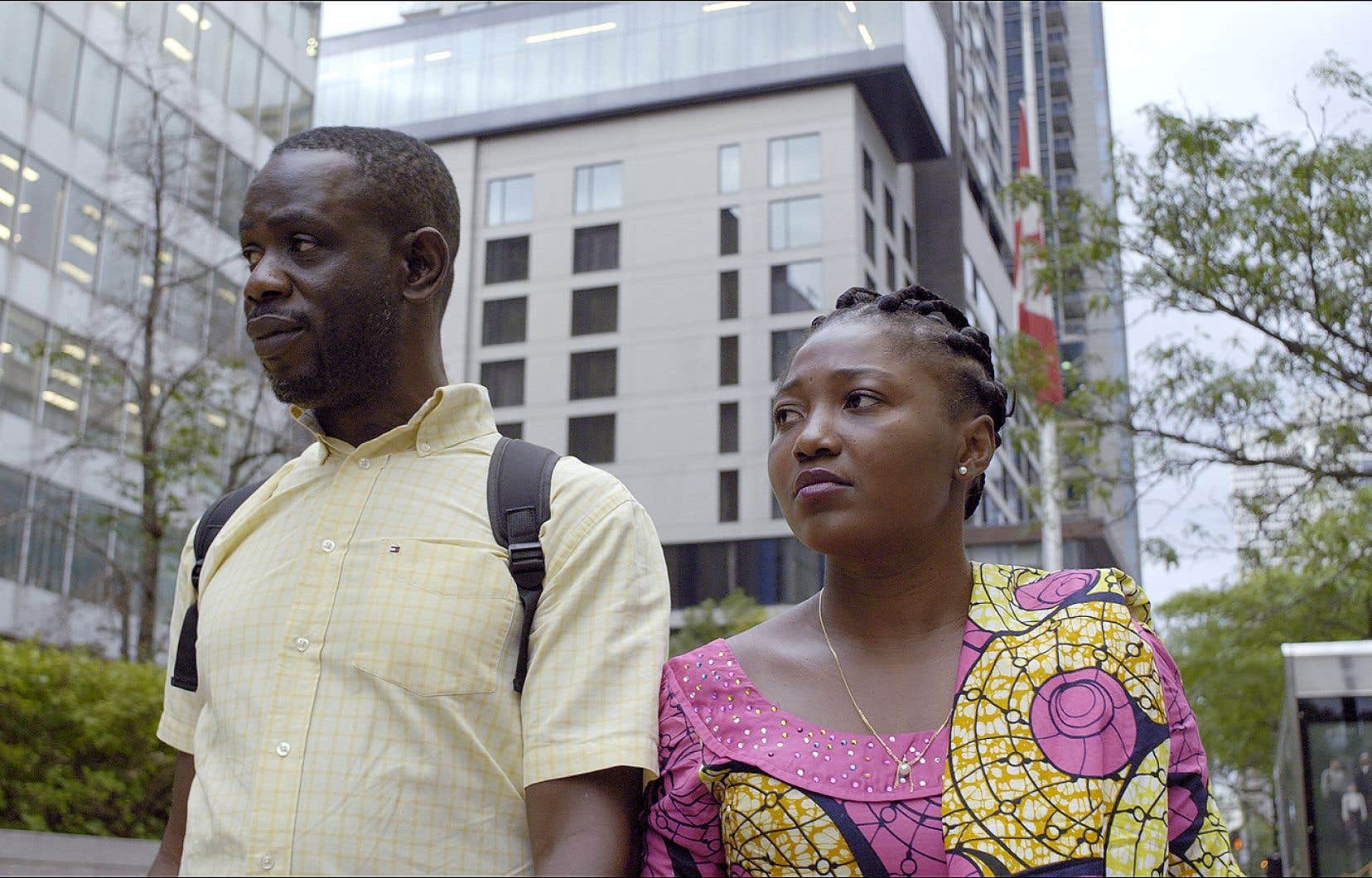It was originally intended to be a film on the “road of death”, the long migratory route from Brazil to Canada that many migrants have taken on foot – and still do – in search of a better life. It has become a documentary about the equally harrowing legal and administrative journey that everyone who applies for refugee status has to go through here.
Directed by Émilie B. Guérette and Peggy Nkunga Ndona, The audiencewhich is released on Friday, tells the story of a Congolese family seeking asylum – that of Peggy – and allows an unprecedented incursion into the world of immigration commissioners who decide to grant it or not.
“Peggy was the first person I met who did this route and I thought she must be the protagonist,” explains Émilie B. Guérette, who lived in Brazil for five years and explored the question. migration in his master’s degree in anthropology. The idea of making a film on this “road of death”, which raised ethical doubts, turned into a happy collaboration with Peggy Nkunga Ndona, who was an actress and journalist in Congo. “The road was already known. But what happens to these people after they have come all this way? That’s what we wanted to tell, ”added Peggy.
From lioness to ant
Punctuated by moments of family tenderness — impossible not to get attached to Peggy, her husband Simon and their three children, Adoration, Consolation and Benjamin — the film takes us through the bureaucratic maze of an asylum request. , culminating in the long-awaited hearing before the Immigration and Refugee Board (IRB).
“Peggy thought it was going to be boring to film an audience. And I told him no, ”said Émilie B. Guérette, who was trained at INIS. “Hearings are held behind closed doors to protect asylum seekers, and in the end we don’t really know how things are going in these rooms. Justice institutions are always interesting to film. It shows the mechanisms of power in action. »
The fact that a film crew was able to film the entire hearing, which took place over three days, is quite an achievement. According to Émilie B. Guérette, the authorization obtained is probably not unrelated to the fact that the immigration commissioner in question here is Charles Côté, a former journalist at The Press. “I think that’s the only reason the IRB let us film. He understood the importance of documenting the process. »
From the first moments of the hearing, one is quickly seized with unease in front of the austerity of the decor and the technical coldness of the addresses and interventions, however necessary for the neutrality of the institutions of justice. But it is a question of deciding the fate of human lives, lamented the two directors. “When I think about it, it moves me every time. We are scared. We feel very small, helpless. In my life, I’m like a fighting lioness, but here, really, I was an ant,” Peggy said.
The elephant in the room
Continuing in the animal metaphor, the lack of preparation of asylum seekers for the hearing, in particular by their lawyers or consultants, “it was the elephant in the room”, added Émilie B. Guérette. “It was killing me to see that we hadn’t prepared them well. Lawyers have a crucial role in this, she says. It’s a system problem. When people arrive, you have to direct them to the right people. »
For her, the audience was not an appropriate place to welcome often traumatic stories. ” That’s not a safe space, she says. Asylum law is the only area of law where claimants have the burden of proof. They allege that they are in danger and they are approached with suspicion. They are told: “Prove to me that you have indeed suffered torture, that you are in danger. Show me everything!” »
This bureaucratic logic is that of North America, which works a lot with paper, believes the filmmaker. “It’s also not the same relationship to the way of telling and answering questions. And that is a real systemic and cultural obstacle. »
After rejection, hope
From the first questions asked by the commissioner, we immediately understand that Peggy and Simon risk not qualifying for asylum, because they obtained permanent residence in Brazil when their daughter was born, a country deemed “safe”. “. If the suspense remains until the end, the story ends badly for Peggy and her family. At least for this first chapter, where the request for asylum was refused.
All their hopes now rest on an application for permanent residence on humanitarian grounds, a status that can be granted on the basis of compassion, when one demonstrates a good integration. But the two directors, who have become great accomplices over time, have no illusions: around 70% of these requests are refused.
“We can’t plan for the future because we don’t know,” says Peggy Nkunga Ndona, who currently works at her children’s school, notably as a supervisor and accompanying person. Simon, who was a businessman in the Congo, works in a warehouse in Lachine. “We try to live day to day, one day at a time. »
Despite the anguish of knowing that they could be expelled from the country, Peggy cannot help but see the flowers on the asphalt. A neighbor who brings her a cake, the school principal who gives her a hug, a community of neighbors and friends who have launched a crowdfunding campaign to help pay the legal fees. “Each of these gestures, we take them. »
The two directors rely on the film to “make noise” around this story. “My intention is to create bridges between people who would not meet in real life, but who, during a film, will learn about another reality,” says Émilie B. Guérette. Maybe something will change from that meeting. »
